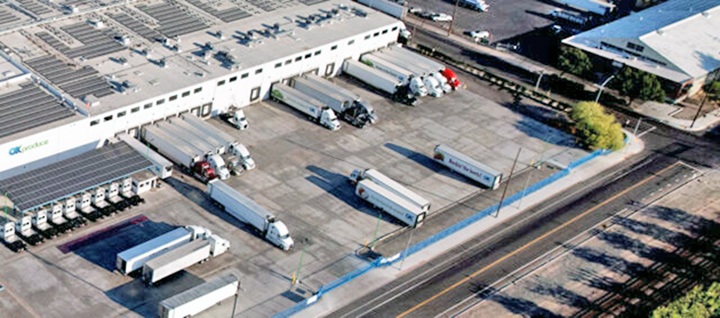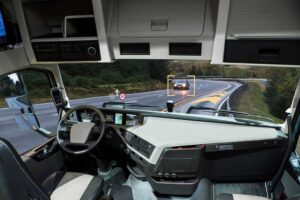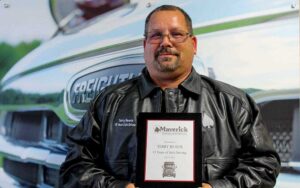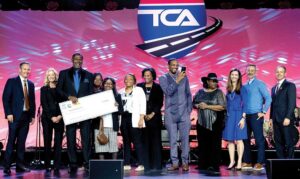FORT WAYNE, Ind. — A new study by the North American Council for Freight Efficiency (NACFE) and RMI on electric truck depots shows that it’s still taking too long for power delivery and infrastructure to be installed, which is driving portable/temporary charging.
For example, it took between nine and 36 months to energize the infrastructure at the 10 depots that participated in the study, according to NACFE.
The study’s report, Electric Truck Depots Are Evolving: How 10 Fleets Grew Their BEV (battery-electric vehicle) Populations, documents the year-long effort to bring Run on Less-Electric DEPOT (RoL-E DEPOT) to fruition and provides an analysis of the initial findings and lessons learned from this demonstration.
The report explains what RoL-E DEPOT was and why NACFE thought it was important to launch the effort, which followed 22 battery-electric trucks at 10 fleet depots in North America. The purpose of RoL-E DEPOT was to focus on the benefits and challenges of scaling from one or two battery-electric trucks to 15 or more.
“We’re definitely on the edge of a new time where BEVs are starting to get adopted in the commercial vehicle space,” said Isaiah Larson, program manager, electric walk-in vans, Freightliner Custom Chassis Corp.
After reviewing 121 fleet depots, NACFE selected 10 fleet depots that had deployed BEVs at scale. NACFE required both the fleets and the OEMs to agree to be participants for each RoL-E DEPOT entry.
“Battery-electric vehicles are not just expensive lawn ornaments,” said Katy Link, electromobility sales manager, Volvo Trucks North America (West region). “These trucks are pulling trailers and delivering goods in a sustainable way.”
The report shares the methods used to select the participating fleets, routes and equipment, as well as what was measured, which will allow the trucking industry to learn a great deal from these progressive fleets that are leading the way to even more electrification. The participants selected are a great representation of truck sizes, duty cycles, and use cases among electric vehicles in fleet operations today.
“We’re seeing telematics data is really a key component to fleet electrification strategies,” said Charlotte Argue, senior manager, sustainable mobility at Geotab.
Key findings that were determined just after the Run proved to be valid as we continued analyzing the data through April 2024.
One key finding was that the fleets in RoL-R DEPOT were a good representation of the current state of the trucking industry. A total of 850 trucks were operated out of the 10 depots of which 291 were BEVs. The depots had a total of 139 chargers and 1044 MWh of power were used as the trucks traveled 446,831 miles over the three weeks of the Run.
Another key finding was that small depots are ready for electrification now. NACFE defines a small energy depot as ones that require less than 10 MWh of power per day because of the small number of trucks and/or low number of miles those trucks travel in a day. There is less cost in energizing these depots.
Electrification at large energy depots is gaining momentum. NACFE defines a large energy depot as one that requires a high amount of power typically exceeding 35 MWh of power per day because there are a large number of trucks operating out of the depot and the trucks are traveling longer distances. Sometimes the BEVs even are driven during two shifts.
NACFE also found that there have been big improvements in trucks and chargers since Run on Less-Electric in 2021. RoL-E DEPOT showed that the industry needs cost and weight reductions to improve the total cost of ownership and that range can be extended with multiple charges per shift at the depot and en route. NACFE also believes that diversity, passion, and capability of the people involved is helping to scale the adoption of electric trucks.
NACFE is currently working on a follow up report that will analyze all the learnings from the run. This upcoming report will include a deeper dive into the interviews completed and the data collected during the Run, including data from a workshop following the Run as well as other developments in truck electrification.
Born in Pine Bluff, Arkansas, and raised in East Texas, John Worthen returned to his home state to attend college in 1998 and decided to make his life in The Natural State. Worthen is a 20-year veteran of the journalism industry and has covered just about every topic there is. He has a passion for writing and telling stories. He has worked as a beat reporter and bureau chief for a statewide newspaper and as managing editor of a regional newspaper in Arkansas. Additionally, Worthen has been a prolific freelance journalist for two decades, and has been published in several travel magazines and on travel websites.








